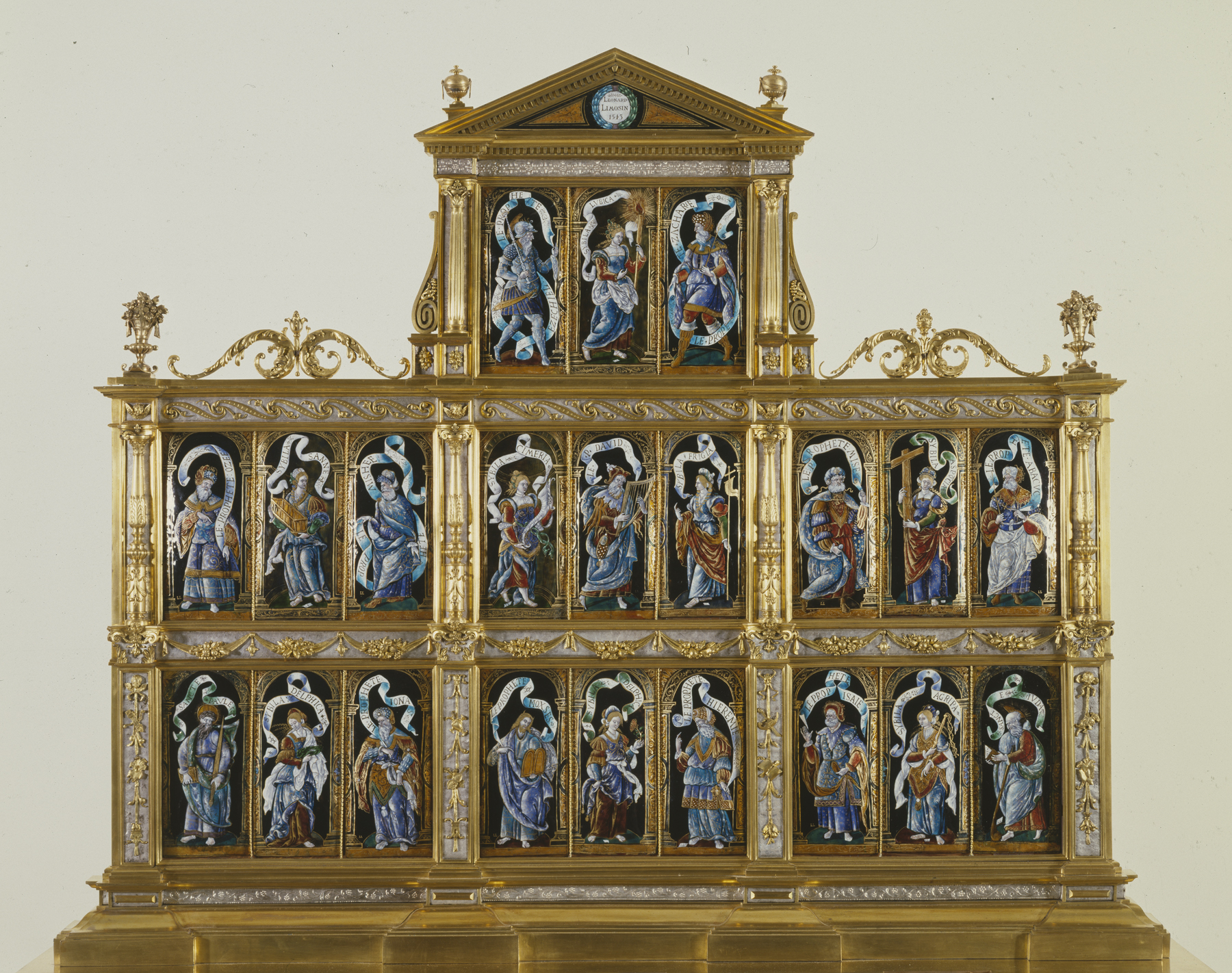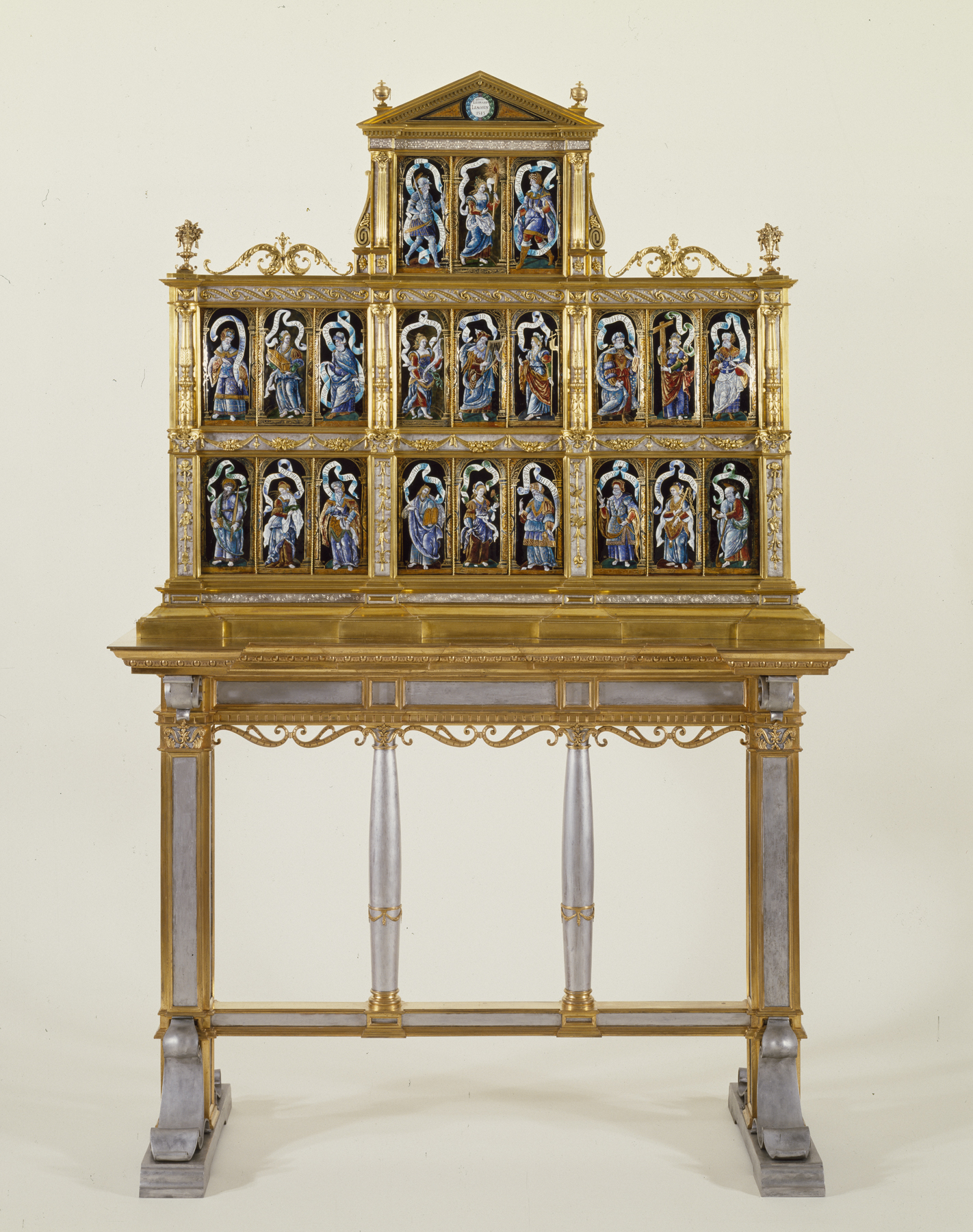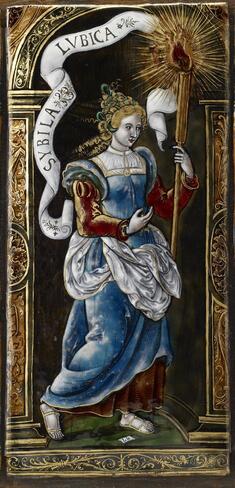Twenty-one Plaques Depicting Prophets, Apostles and Sibyls
(Renaissance Europe )
The idea of juxtaposing the prophets with the Apostles stems from the medieval passion for showing how the events and figures of the Old Testament prefigure those of the New Testament. The sibyls were ancient prophets who, though known to the artists of the Middle Ages, were not frequently represented until the Italian humanist, Filippo Barbieri, published a treatise in 1481 in which he attributed to each sibyl a certain age, appearance, attribute, and particular prophecy which corresponded to that of an Old Testament prophet.
These twenty-one plaques, which were arbitrarily set in the present frame in the 19th century, were probably once arranged according to a strict scheme which contrasted the revelation to the sibyls of the pagan world with the revelation of the Law in the Old Testament and its fulfillment in the New Testament.
The figures, identified by their fluttering scrolls, are dressed in fantastic robes which may in part reflect the costumes of actors in the mystery plays. The Cimmerian Sibyl holds a horn of plenty which refers to the prophecy of Joel that the Lord would relieve the suffering of His people, and to the golden age promised in the Fourth Eclogue of Vergil. In the center is the Old Testament prophet, David, the forefather of Jesus, who is playing his harp. He is flanked by the Phrygian Sibyl who holds the cross-staff with a pennant, the symbol of the resurrection of Christ.
Provenance
Provenance (from the French provenir, 'to come from/forth') is the chronology of the ownership, custody, or location of a historical object. Learn more about provenance at the Walters.
Beurdeley Sale, April 9, 1883, no. 98; H. G. Marquand Sale, New York, January 23, 1903, no. 1061; Henry Walters, Baltimore, 1903, by purchase; Walters Art Museum, 1931, by bequest.
Conservation
| Date | Description | Narrative |
|---|---|---|
| 2/21/1964 | Examination | examined for condition |
| 10/29/1982 | Treatment | coated |
| 1/11/1983 | Treatment | cleaned; coated; reconstructed; repaired; loss compensation; other |
| 9/26/1986 | Examination | examined for condition |
Geographies
France, Limoges (Place of Origin)
Measurements
Each plaque H: 9 1/16 x W: 4 1/8 in. (23 x 10.5 cm) approx.
Credit Line
Acquired by Henry Walters, 1903
Location in Museum
Not on view
Accession Number
In libraries, galleries, museums, and archives, an accession number is a unique identifier assigned to each object in the collection.
In libraries, galleries, museums, and archives, an accession number is a unique identifier assigned to each object in the collection.
44.366







